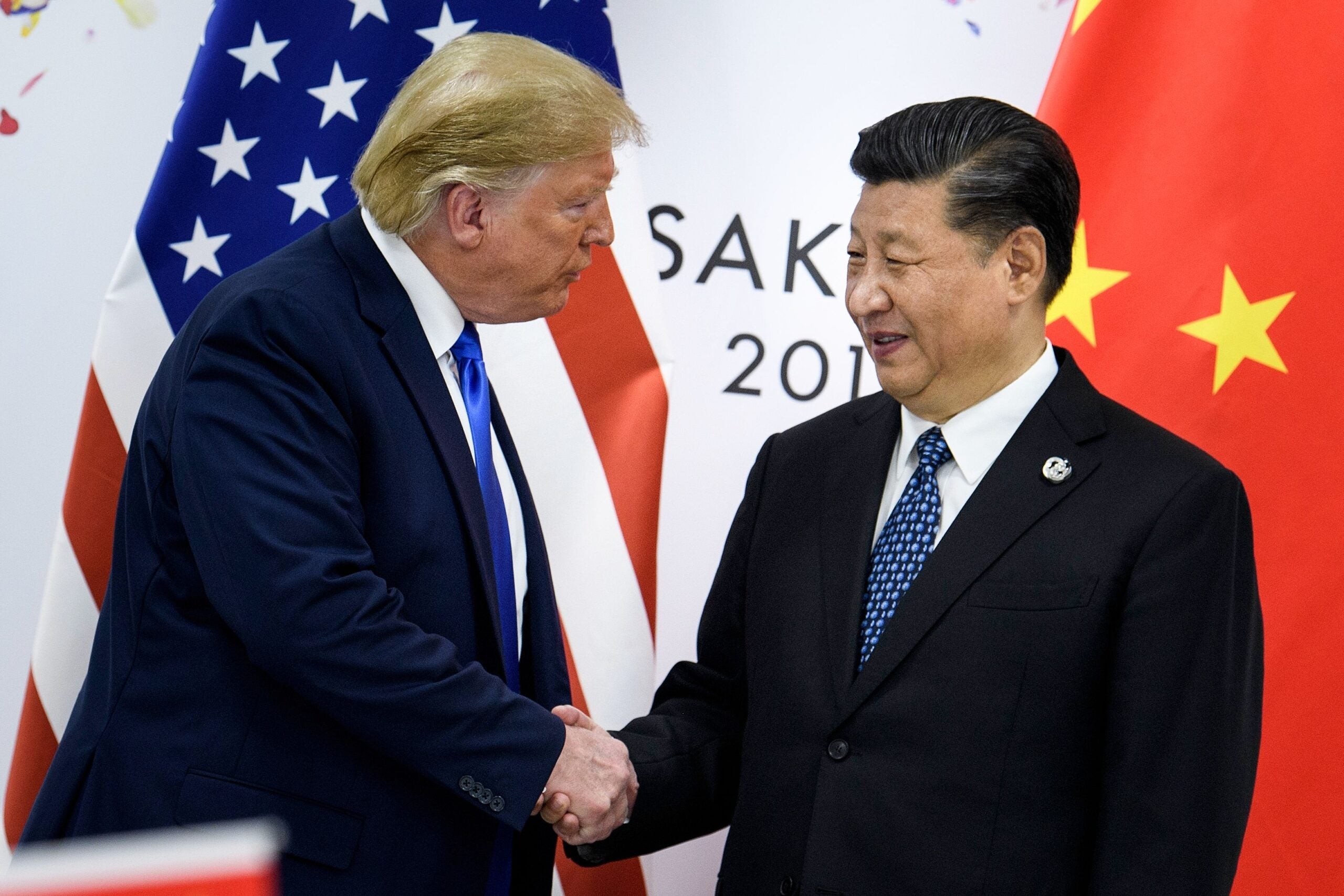

Covid-19 has provided the final nail in the coffin of China to US investment. While relations between the two countries have fluctuated over the past two decades, this decree nisi has been coming. For Beijing, the development follows several years of Chinese investors losing interest in the US.
Just four years ago, Chinese investors were enjoying a lavish spending spree across the US. This belle epoque of US-China economic relations is now well and truly over, with Covid-19 striking what appears to be the final blow.
Indeed, combined foreign direct investment (FDI) and venture capital between the two countries hit unprecedented highs in 2016, according to a recent report from Rhodium Group. Fast forward to the present day, and investment has plummeted, with the first half of 2020 registering the lowest six-month total in nine years.
A US-China divorce – who gets what?
This is but another example of the economic ‘decoupling’ – or divorce – between the two superpowers, a quantum shift that will impact everyday US and Chinese citizens. For example, trade and investment with China supports between three million and seven million US jobs, depending on what methodology is used, according to the US-China Business Council.
The drop in foreign investment has been felt by both sides. Completed US direct investment in China decreased to $4.1bn in the first half of 2020, the worst performance in a decade, according to Rhodium’s report. Chinese investment figures into the US would have also hit a ten-year low, were it not for one enormous acquisition announced in late 2019.
Of course, these shocks are no surprise insofar as Covid-19 has caused foreign investment to nosedive the world over, thereby putting many millions of jobs at risk. However, US-China economic ties have been hit particularly hard.
How well do you really know your competitors?
Access the most comprehensive Company Profiles on the market, powered by GlobalData. Save hours of research. Gain competitive edge.

Thank you!
Your download email will arrive shortly
Not ready to buy yet? Download a free sample
We are confident about the unique quality of our Company Profiles. However, we want you to make the most beneficial decision for your business, so we offer a free sample that you can download by submitting the below form
By GlobalData“The pandemic created another flashpoint for US-China frictions, with both sides blaming the other for their handling of the pandemic, thereby exacerbating deteriorating US-China relations already strained by the trade war and other developments from the past few years,” says Rhodium associate director Adam Lysenko.
Although US investment in China has remained remarkably stable for more than a decade (see chart below), in every other regard trade and FDI between the two superpowers has deteriorated over the past few years. In particular, the deluge of Chinese investment has dried up since 2016, as the above chart shows.
“Covid temporarily slowed bilateral trade, but its impact on long-term investment is harder to measure,” says president of the National Committee on US China Relations Stephen Orlins.
“While investment is influenced by many economic factors, at this point the restrictive measures taken by both the US and Chinese governments seem to be having a greater dampening effect on investment than any other factor,” he adds.
The fall of Chinese investment
In the summer of 2016, as President Xi Jinping and former US President Barack Obama sipped tea in Hangzhou, Chinese investment to the US was shaping up for a record year – totalling $46bn.
Since then, however, Chinese investment has plummeted. After 40 years of ever-deeper economic integration between the US and China, the two superpowers are in the process of decoupling.
One reason behind this is that US regulation has become much more hawkish.
“A lot of Chinese companies, many of which are state-owned enterprises [SEOs], are not able to invest in the US due to new regulations that bar SOEs from competing in the American market,” says Dr Yu Jie, a senior research fellow on China at UK-based think tank Chatham House.
Indeed, in mid-2018 the US Congress passed the Foreign Investment Risk Assessment Modernization Act (FIRRMA) to significantly expand the review authority of the Foreign Investment Commission in the United States (CFIUS) on the grounds of national security.
“The Trump administration pursues a policy of ‘America First’, unilateralism and trade protectionism [using] ‘national security’ as an excuse for unwarranted charges… FIRRMA and CFIUS have caused lots of concerns among Chinese investors,” says Sun Xinhua, an economic and commercial attaché at the Chinese Embassy in France.
In an effort to restrict the sale of US technology to Chinese companies, and vice versa, the past 12 months have witnessed high-profile bans aimed at China’s Huawei and Tik Tok. Chinese investment to the US has always been dominated by mergers and acquisitions (M&A) (see below chart), a dynamic that has driven Republican and Democrat concerns surrounding intellectual property theft – one of the key causes of the ongoing trade war.
“The hostile political environment means that Chinese investors (and tourists) don’t want to put as much money in the US; it is a no go area,” says Jie. “They have seen how Huawei and ZTE were treated, and fear a similar fate. This is a huge loss to Trump.”
Chinese FDI to the US has also been on the decline due to internal capital controls from Beijing. Since 2016, regulators have made it more difficult for Chinese SOEs to invest in sectors outside of their core business, such as sports and entertainment.
“Lastly, there has been a growing trend in China to consolidate more tech investment at home, instead of letting the Chinese companies go into the US,” says Jie. “So it is a big change in policy.
“Going forward, I expect to see a steady decline of investment, driven largely by the really fast, deteriorating bilateral relations between the two countries,” she adds. “Nobody knows how bad the relationship will be.”
No change if Biden wins?
This ‘new Cold War’, as some have dubbed it, is already spreading beyond technology and into finance. Multinationals across all major sectors are likely to be impacted by upcoming changes in US and Chinese law.
“The rift with China is not likely to change for the better anytime soon, regardless of what the US government looks like next year,” says Doug Barry, senior director of communications and publications at the US-China Business Council. “The tone may change, but not the substance.”
When it comes to technology competition and the trade deficit with China, Trump and Joe Biden are on the same page.
“On the trade side, China has fallen far short of its phase one trade deal commitments, and there is risk of an eventual refocus on US-China trade imbalances in US politics – right now coronavirus and the election have left little room for much else,” explains Lysenko.
Indeed, China notched up record net exports up to September 2020, in spite of the Covid-19 pandemic, and the trade imbalance with the US remains stubbornly high.
Will US investment remain steady?
FDI from the US to China has shown remarkable resilience over the past ten years, as the chart below shows.
However, data from the first half of 2020 shows that Covid-19, alongside pre-existing political tensions, have put those flows under pressure too. Despite this downtick, the industry does not expect a rapid decline in US investment into China in the same way that China has withdrawn from many US sectors in recent years.
According to Rhodium Group, the 31% decrease in US-to-China FDI in the first half of 2020 was mainly caused by a number of greenfield projects – job and facility-creating investments – reaching completion, and there being a lack of large M&A deals. However, the report notes that several significant pending M&A deals and ongoing greenfield projects remain on track.
“In particular, capital expenditure from the ongoing greenfield constructions are backed in for the next few years, so a rapid drop-off like we have seen in the other direction is unlikely to happen for US FDI in China,” the report says.
China’s continuous need to attract foreign investment in order to keep on a stable economic growth trajectory, combined with the size of its ever-tempting domestic market, are likely to keep US investments into the country steady.
“The legitimacy of the Communist Party is resting on stable economic growth and foreign investment is absolutely vital in that respect,” says Jie. “No matter how many times President Trump attacks China, the Chinese will keep sending the message that the door to business in China remains open.
“On the other hand, the sheer size of the Chinese market continues to make it attractive to American investors,” she says. “General Electric, for instance, has hired more than 100,000 employees in China, and one-third of the revenue of General Electric comes from China. Why would it want to withdraw from this large market and commit economic suicide?”
However, political tensions have started to exert an influence. Rhodium notes that US firms operating in China are considering the extent to which US-China decoupling may affect their assets in the region in the coming months and years.
“This is a particularly important question in the technology space, where the US treatment of Chinese firms such as ByteDance, and a broader shift away from US-China technology integration, may lead to policies that make it more difficult for US technology firms to operate in China,” the report says.
A recent report from PwC also offers a dark forecast: in general, business leaders in the US are moving forward with investment plans regardless of the outcome of the US election, with the exception of projects in China.
The impact of nearshoring
Part of Trump’s ‘America First’ agenda focused on the repatriation of businesses from abroad – and particularly from China. However, there are little signs that the rhetoric has taken hold.
The 2020 China Business Report by the American Chamber of Commerce in Shanghai, in collaboration with PwC, shows that as little as 3.7% of the 200 respondents surveyed are moving some production out of China to the US and 70.6% showed no intention of shifting production out of China.
“Some manufacturing may return to the US in sectors deemed critical, such as PPE and some pharmaceuticals, but most of what is imported from China are additives, not the finished drug,” says Barry. “But short of huge incentives from the US government, which are not on offer now, it is hard to see substantial reshoring.
“Other countries in South East Asia, and perhaps as far away as Bangladesh and India, have already been benefitting from a shift in supply chains away from China, but this is mostly because for some products China is no longer the cheapest game in town,” he adds.
However, China remains in many ways unmatched in terms of infrastructure, logistics and skilled labour. This competitive advantage will continue to attract foreign investment and secure China’s place in global supply chains, says Barry.
Rolling out red tape for China
Regulation is another hot topic in the FDI world, especially when it comes to investment and trade with China.
In the wake of the Covid-19 pandemic, many governments around the globe, including in the US, have expanded their FDI regulation to protect what they deem as critical assets from predatory behaviour. China, on the other hand, is working towards opening up more sectors to foreign investment.
The electoral results of the US presidential election in November are likely to play an important role in this field. There remains strong bipartisan consensus for tightening FDI rules, however, although the result of the election will determine how hard and fast these laws are changed.
“If Trump wins re-election, yes, I would expect US screening mechanisms to continue tightening, regardless of what China does to liberalise its investment climate… If Biden wins the election, the situation will likely become more complicated,” says Orlins.
“The Biden team has suggested that it would take a more multilateral approach and work with our allies to rein in some of China’s transgressions,” he adds. “My hope is that, in protecting our national security, a President Biden would find better ways of preserving our economic openness, by following more of a ‘small-yard, high-fence’ strategy.”
Nonetheless, both Democrats and Republicans are united against China in terms of technology competition and the trade imbalance. Following the elections, these issues will take centre stage again, intertwined with the ongoing global health crisis.
This article is part of a wider special New Statesman Media Group feature on the US-China decoupling. On Investment Monitor we have a feature on how any drop in Chinese investment will have a bigger impact on Trump-voting states. In the New Statesman, Jeremy Cliffe examines the geopolitics of the situation, Emily Tamkin reports on its impact on the US election, and Ido Vock charts the social ties between the two countries. In Tech Monitor, Ed Targett reviews the growing impact this shift is having on technology supply chains.






